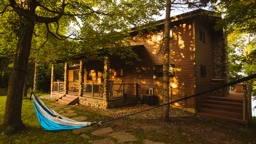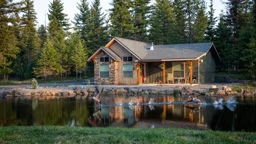
Plenty have done so, especially when it comes to pontoon boats. Typically built from aluminum (frame and pontoons) with a wood deck, pontoon boats lend themselves easily to restoration because there’s usually no complicated and difficult fiberglass work involved. Also, replacement furniture specialists have become commonplace in the past five years or so. Finally, most of the work can be done right there on the boat, outside in decent weather, as opposed to needing to perform the work inside a workshop.
A Topsides Makeover
Many older pontoons are structurally sound but in need of a refresh on the topsides. That is, the pontoons, substructure (that attaches the pontoon tubes to the decking), the deck itself, and the perimeter fencing and railings are intact, but the interior furniture and console have weathered away over the years of use and exposure to the elements.If this is your scenario, it’s easy to select, purchase and replace the deck furniture and console over the course of a few weekends, thereby transforming your older ’toon with a fresh topsides makeover.
TIP: For parts, carpet, tops, consoles and furniture, there are many websites that make selection, ordering and installation easy. One source is pontoonstuff.com, a complete supply house specializing in pontoon boat refurbishing.
First Things First: the Foundation
Before you can lay the carpet and order new deck furniture, the boat’s foundation – like a cabin’s – must be secure and seaworthy. Start with a simple, but thorough, visual inspection.Pontoons
The pontoons themselves are easy to inspect for cracks, dents, split seams, holes and leaks. If you can’t locate any areas where water can get in, but you’ve been told it leaks (or upon delivery, you heard water sloshing inside the tubes), you must find a way to drain all the water out. Many pontoons don’t have drains at the bottom stern ends; you may want to make this modification for not only draining out water but also for future use (when winterizing, for example.) If you’re not an aluminum welder, you may want to enlist the help of a local marina or welding shop to repair any dents, rips or holes in the pontoons.
Deck superstructure
Likewise, after you’ve removed all the furniture and stripped the deck wood and outboard from the boat, you can check for broken crossmembers in the deck superstructure and have them welded at the same time.Check carefully around the transom – where it’s welded to the boat deck frame and where the outboard is bolted. This is typically where the most stress is and where you may find structural weakness. Have an expert inspect it if you’re not sure.
TIP: Before repairing anything, ensure the structure is level, plumb and square. This may involve checking it end-to-end and side-to side, as well as vertically. The best way to do this is to find a level spot (like a garage floor), put the boat on the surface and commence measuring. You may have to use straps and come-alongs to gently force the boat into a square and level condition before welding and repairing any of the superstructure and deck.
Deck
The deck is vital to your boat’s structural integrity. If you find it’s easier to simply replace the wood decking, now’s the time to do it. Marine plywood, or at least treated A-A plywood, is best for this application. Check your boat’s deck carefully for rot or damage.TIP: After cutting the new decking to size (you can often use the old deck for a pattern if it’s not too far gone), drill any holes necessary (for attaching bolts, steering cable pass-through holes, etc.) and seal it thoroughly with West Systems or similar brand epoxy, before installing it into the deck supports. The epoxy sealer will ensure the deck will last nearly a lifetime.
Carpet
Console
A lot of time is spent behind the wheel, so it pays to spend time ensuring it’s right. A new console may be the way to go. New gauges, controls and rigging go with a new console installation.TIP: Reasonable prices on gauges, complete gauge sets and controls can be found on eBay, or at your local dealer – poke around and ask questions, many dealers have “NOS” (new old stock) gauges and controls that they’re glad to get rid of, as these parts may just be just taking up space. Online sites that specialize in NOS gauges, gauge sets, controls, windscreens, marine stereos and related console accessories include: overtons.com, bassproshops.com, greatlakesskipper.com and go2marine.com.
If you’re not versed in boat rigging, now would be the time to bring in a seasoned mechanic to help. What about steering systems? A new steering wheel and cable will make piloting easier and put less strain on your arms, especially if the current steering system is old, hard to steer and the cable is packed with old rust and grease. Even better – if you’re planning on doing the work yourself, splurge a bit and upgrade that old push-pull cable system to hydraulic. Your arms will thank you, especially after a long day on the water.
A small windscreen will help keep wind fatigue down, especially after a long day on the water. A Bimini top will keep the hot sun off the interior.
Don’t forget lighting: be sure to rig new navigation lights (at the bow) and anchor light (at the transom/stern). If you do any dusk or night cruising, anchor-out fishing or relaxing after dark, navigation and anchor lights are mandatory so that others will see you (and required by most state laws and Coast Guard regulations!). On a separate circuit, interior mood lighting along the seat bases makes setting the mood for dusk cruising easy.
To complete the rigging, a quality marine stereo, subwoofer and multiple speakers placed strategically throughout the boat will provide good sounds for your crew.

Adobe Stock / Mark Herreid
Furniture
How worn and tired are your chairs and loungers? You’ll need to decide whether to repair or replace.Repairing
In some cases, your existing furniture may just need to be refreshed; the cushions and bases are OK, but the vinyl covering is old and tattered. If so, a local upholstery shop specializing in marine interiors, boat covers and tops may be a good alternative to simply replacing the furniture. Having a local expert check out your rig and offer his/her suggestions and a price calculation may be a better option.Replacing
Today’s pontoon boat furniture is pretty high-tech. First, most are roto-cast plastic for a lifetime’s use and easy to secure to the deck with stainless screws – no more wood seat bases to rot out. Most use high-grade vinyl (same as used on many new pontoon boats) stapled with stainless or aluminum staples (no rust), with high-density foam underneath, so it can take many seasons of use and abuse. More good news: Choices in colors and styles are almost limitless. Even the newer lounge designs are available, so your older ’toon can match the latest models in comfort and style.For selection and purchase, pontoonstuff.com features an interactive deck furniture layout design function, which works well when you don’t want to replicate what was there before. You can experiment with layout and placement as well as couch, lounger and seat size to suit your family’s needs best – before you make your purchase. This way, you design your interior yourself, and using your boat’s deck measurements and console position, you know it will fit before you order.
TIP: It may be tempting to simply place the couches and loungers on the deck against the side railings (after all, they’re relatively heavy, and most pontoons are not too fast or bouncy out on the water, so why would they move?). But they will move; even the slowest pontoons gyrate and bounce when the water’s rough. That’s not safe for you or your passengers. It’s far safer and more permanent to secure the seats with stainless through-bolts or at least wood screws. Use locking nuts and large, flat “fender washers” to ensure the screws stay tight and don’t pull through the deck and seat bases when in use.
See also Storing Your Cabin's Gear for the Water










